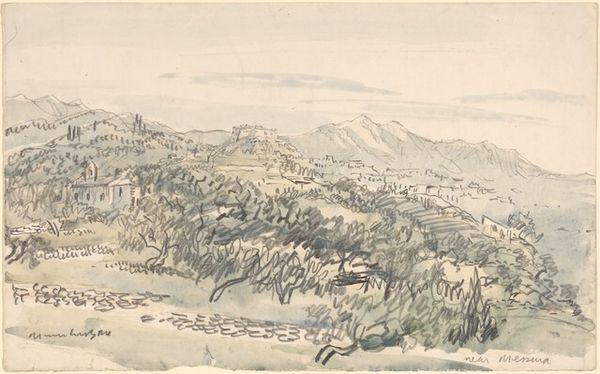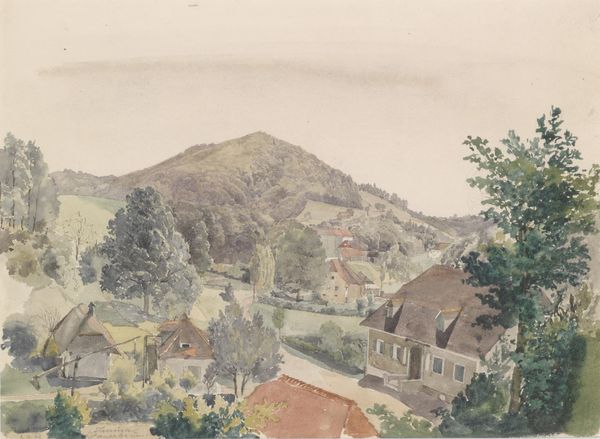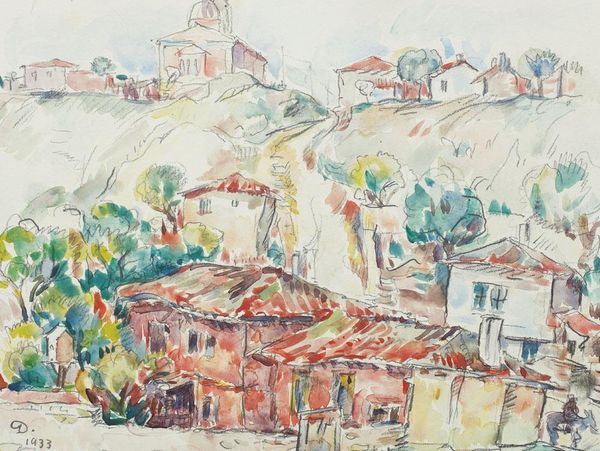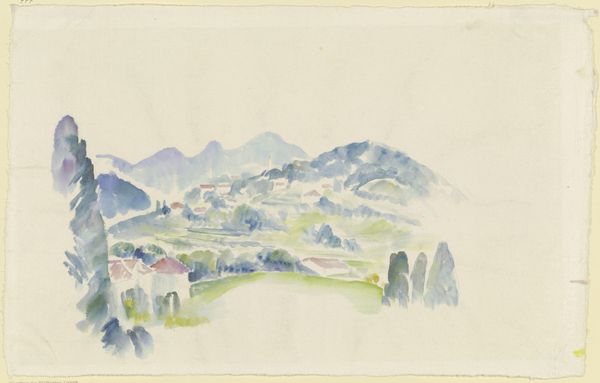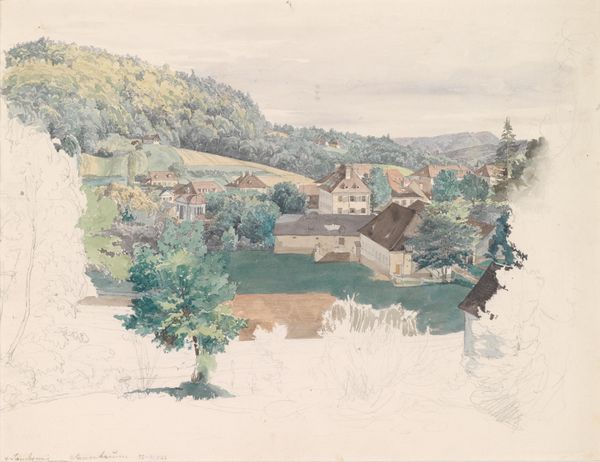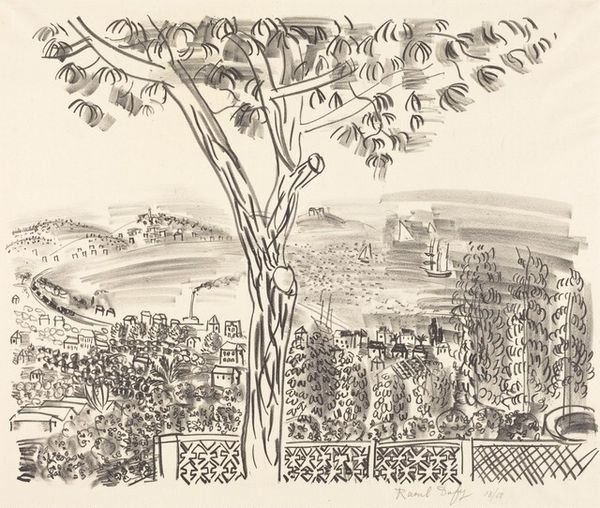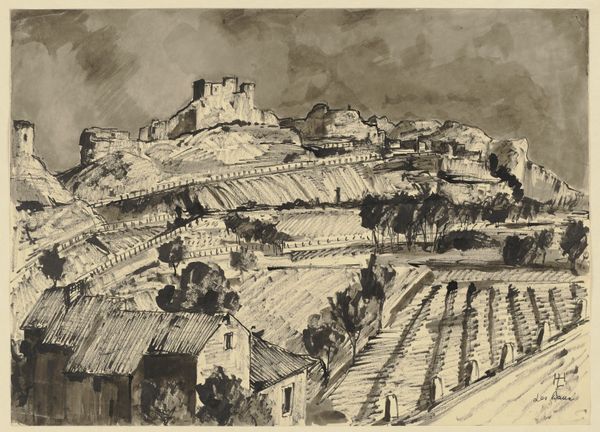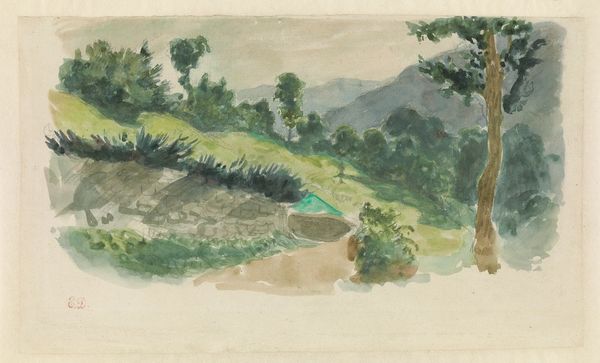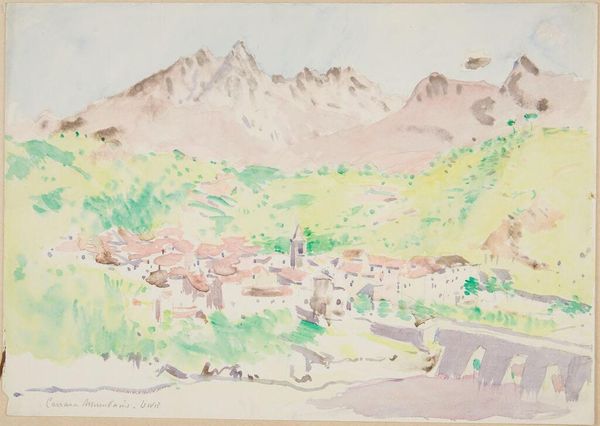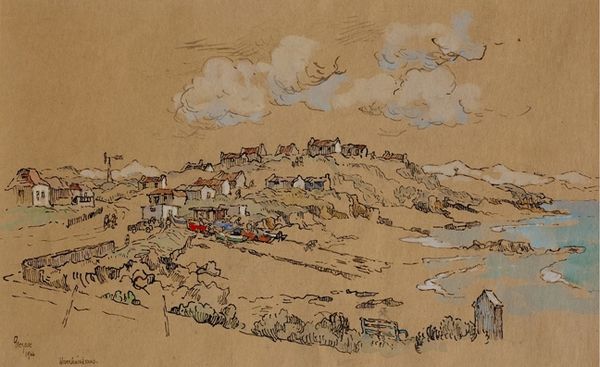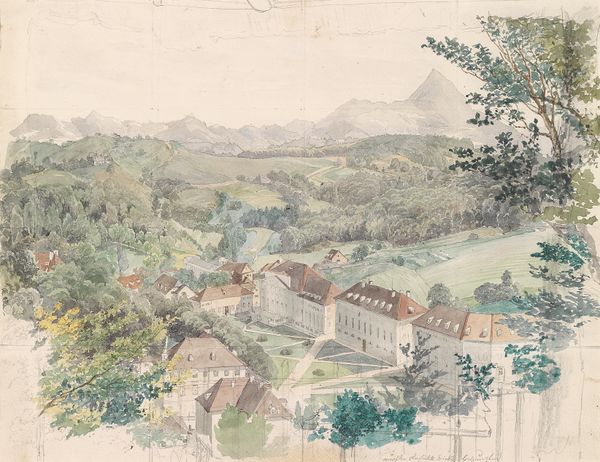
drawing, painting, watercolor
#
drawing
#
ink painting
#
painting
#
landscape
#
figuration
#
watercolor
#
line
#
cityscape
#
modernism
Dimensions: sheet: 50.5 x 65.2 cm (19 7/8 x 25 11/16 in.)
Copyright: National Gallery of Art: CC0 1.0
Curator: Well, this watercolor by Raoul Dufy, titled "Vallauris," painted between 1927 and 1928, hits me with such breezy, lighthearted energy. I mean, look at the way he’s captured that Provençal light! Editor: My first thought looking at this landscape, "Vallauris," is its clear demonstration of a post-WWI European recuperation fantasy. Note the utopian longing for pastoral simplicity and the depoliticized celebration of the rural sphere as the natural locus of cultural life. Curator: Recuperation, that's one way to put it! For me, it's just such a joyful scene. The way he layers the watercolor, it almost dances. The orange roofs of the buildings nestled into the rolling hills... it feels like pure pleasure on paper. Editor: Perhaps. However, consider the politics of pleasure itself. By depoliticizing a region – in this case, the South of France – Dufy is reproducing a colonial vision, one which idealizes the location through what we might consider an exploitative perspective. How are its residents implicated or considered in this depiction? Curator: Hmm, I see what you mean, but doesn't the lighthearted style sort of democratize the scene? I feel like it reflects a vision for shared leisure and accessibility, you know, a space where everyone is invited. Editor: I would offer an alternative reading, specifically through the theoretical lens of critical race studies. How can this lightheartedness signal privilege by refusing to acknowledge racial inequalities? Curator: Alright, alright. It seems my impression of leisure may have missed the point. Maybe the painting, for all its charm, benefits from and perpetuates certain inequalities. So much for just pure color! Editor: These tensions make "Vallauris" far from straightforward! By holding both perspectives in our awareness – the joyful and the critical – we may gain deeper insights into the painting, its social context, and also ourselves. Curator: Precisely. Maybe, after all, this art helps me confront a part of myself, to recognize what may have gone unnoticed and yet demands consideration. Editor: Indeed, which should now inform how we might both encounter and consider the work henceforth.
Comments
No comments
Be the first to comment and join the conversation on the ultimate creative platform.
